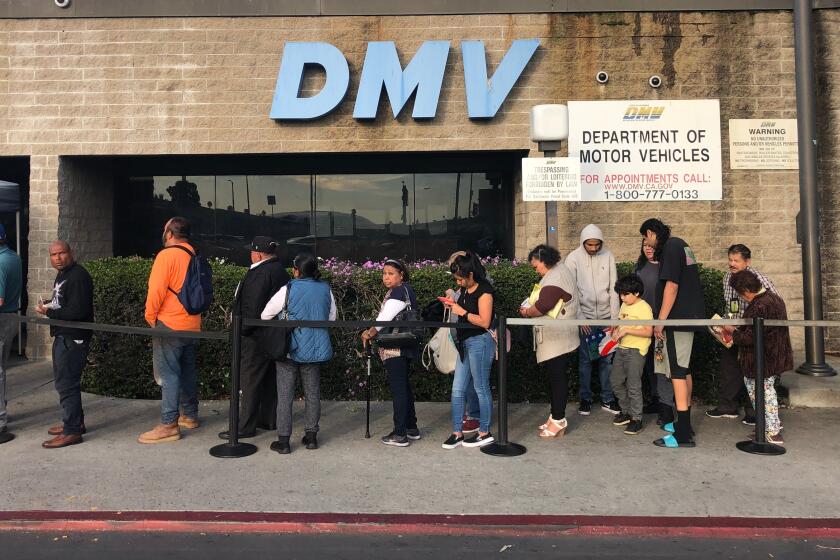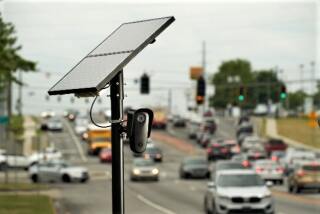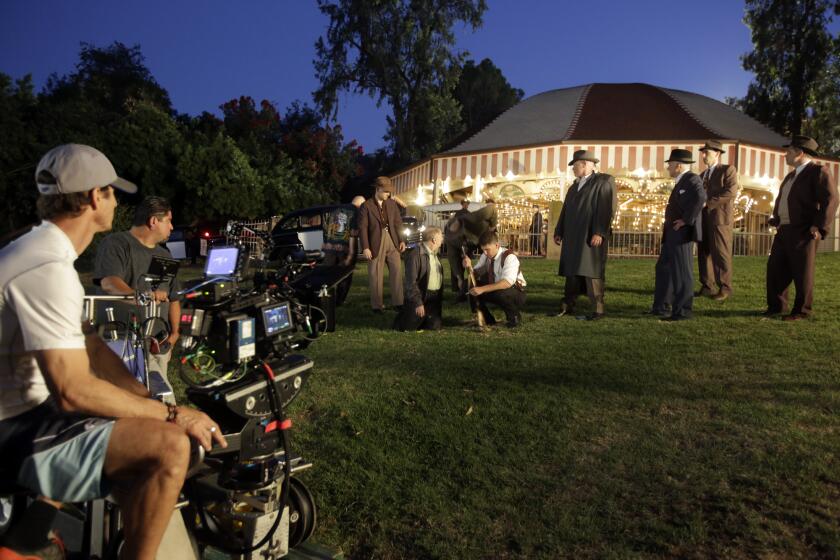The Real ID deadline is finally here. How bad will it get at airports as long-delayed rules hit?

- Share via
After nearly two decades of delays and warnings, implementation of the federal government’s Real ID program is set to begin Wednesday at airports around the nation amid questions about how the change will affect air travel.
The requirement that travelers present a Real ID card as well as regular identifications is one of the biggest changes to airport security, but officials said Tuesday that the rollout will be gradual. Travelers without a Real ID generally will be able to board fights but should expect additional questioning.
Travelers without a Real ID or a Transportation Security Administration-acceptable form of identification “may be diverted to a different line” at TSA checkpoints, Homeland Security Secretary Kristi Noem said Tuesday.
“We will make sure that it is as seamless as possible and that travelers will get to stay on their intended itinerary,” Noem said. “What will happen tomorrow is folks will come through the line, and [they] will issue their ID and show it. If it’s not compliant, they may be diverted to a different line, have an extra step, but people will be allowed to fly.”
It remains unclear what impact the implementation of Real ID will have on airport operations — and traveler headaches — beginning Wednesday.
John Breyault, vice president for the National Consumers League, warned travelers to expect that a high number of people will be diverted for additional screening. How that will affect wait times will depend on how many TSA officers will be assigned to perform the additional screening, he said.
Currently, 81% of travelers have the Real ID, according to the Department of Homeland Security.
“If 1 in 5 people are diverted to secondary screening at TSA, it will be a complete disaster at some airports around the country,” Aaron Reichlin-Melnick, senior fellow at the American Immigration Council posted on X.
Whether you have a Real ID or not, Breyault suggested fliers arrive even earlier at the airport for the next few weeks to avoid missing a flight.
“Even in the best of times, we say arrive at the airport an hour and a half early for domestic flights,” he said. “I would say in the interest of just being as risk free as possible, two hours, at least, seems like a good rule of thumb.”
If you’re traveling with a group with a mix of Real ID and non-Real ID holders, factor in even more time depending on the number of people in the group.
Congress passed the Real ID Act in 2005 to improve security and minimize fraud in the aftermath of the 9/11 terrorist attacks.
The original deadline to have a Real ID to travel domestically or enter federal facilities such as military bases or federal courthouses was May 2008.
Funding challenges, concerns over travel interruptions and the pandemic delayed the government from implementing the Real ID requirement.
“We are telling people that this law will be enforced, and it will allow us to know individuals in this country, who they are and that they’re authorized to travel,” Noem said.
As of Jan. 1, more than 18.5 million California residents have their Real ID, compared with last year’s January count of 16.9 million according to data from the state Department of Motor Vehicles. More than 35 million Californians have either an ID, both an ID and a driver’s license, or an ID for people younger than 16.
The California Department of Motor Vehicles is opening some offices an hour early this spring to help people who have not yet obtained a Real ID before the May deadline.
What happens at a TSA checkpoint without a Real ID?
If you don’t have a Real ID or you applied for one but it won’t arrive by Wednesday, the TSA will accept other forms of identification at screening checkpoints.
It accepts:
- U.S. passport.
- U.S. passport card.
- Department of Homeland Security trusted traveler cards (Global Entry, NEXUS, SENTRI, FAST).
- U.S. Department of Defense ID, including IDs issued to dependents.
- Permanent resident card.
- Border crossing card.
- An acceptable photo ID issued by a federally recognized tribal nation or Indian tribe, including enhanced tribal cards.
- HSPD-12 personal identity verification card.
- Foreign government-issued passport.
- Canadian provincial driver’s license or Indian and Northern Affairs Canada card.
- Transportation worker identification credential.
- U.S. Citizenship and Immigration Services employment authorization card (I-766).
- U.S. merchant mariner credential.
- Veteran health identification card.
I don’t have a TSA-accepted form of identification. What happens next?
A TSA officer may ask you to complete an identity verification process, which includes collecting information such as your name and current address to confirm your identify, according to the TSA website. It is unclear how that information is verified.
If your identity is confirmed, you will be allowed to enter the screening checkpoint, where you may be subject to additional screening.
You will not be allowed to enter the security checkpoint if you decline to provide acceptable identification, you don’t cooperate with the identity verification process or your identity cannot be confirmed.
Beginning March 31, people will no longer be able to verify their identity to the Social Security Administration over the phone.
How can I get a Real ID now?
To get a Real ID, you have to apply for it through your local Department of Motor Vehicles office.
From now until June 27, 18 DMV offices will open at 7 a.m., an hour earlier, on Mondays, Tuesdays, Thursdays and Fridays to serve only people with appointments to obtain a Real ID.
To start the process, you should visit the DMV website and review the document checklist for what you’ll need to prove your identity and residency. You can fill out an application online, upload the required documents and schedule an appointment at your local DMV office.
These DMV offices will open an hour early:
- Pleasanton (6300 W. Las Positas Blvd.).
- Fremont (4287 Central Ave.).
- Folsom (323 E. Bidwell St., Suite A).
- Carmichael (5209 North Ave.).
- Thousand Oaks (1810 E. Avenida de los Arboles).
- Van Nuys (14920 Vanowen St.).
- Arleta (14400 Van Nuys Blvd.).
- Glendale (1335 W. Glenoaks Blvd.).
- Pasadena (49 S. Rosemead Blvd.).
- Culver City (11400 W. Washington Blvd.).
- Westminster (13700 Hoover St.).
- Costa Mesa (650 W. 19th St.).
- San Clemente (2727 Via Cascadita).
- Rancho Cucamonga (8629 Hellman Ave.).
- San Diego Clairemont (4375 Derrick Drive).
- San Marcos (590 Rancheros Drive).
- El Cajon (1450 Graves Ave.).
- Poway (13461 Community Road).
More to Read
Sign up for Essential California
The most important California stories and recommendations in your inbox every morning.
You may occasionally receive promotional content from the Los Angeles Times.












